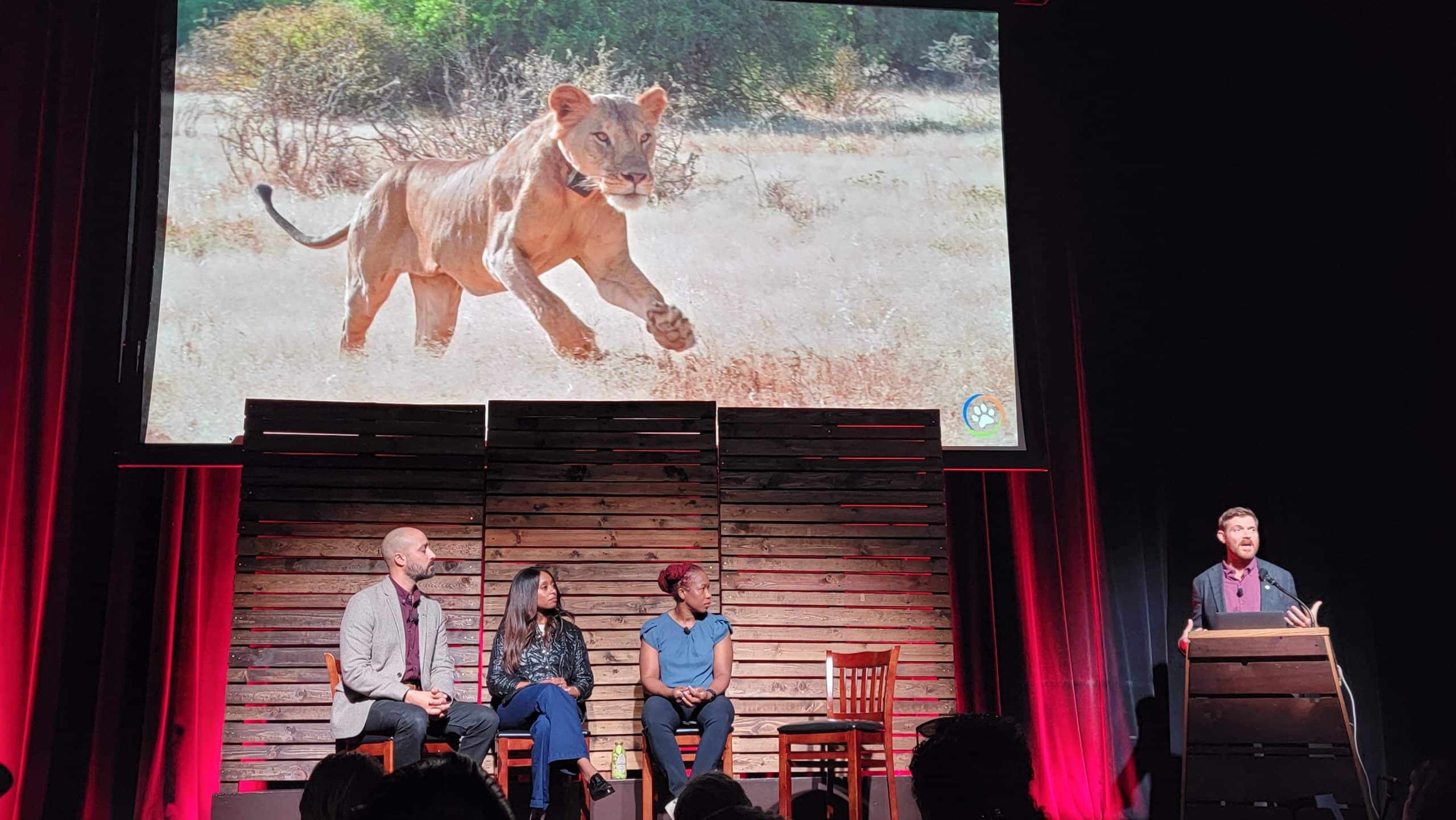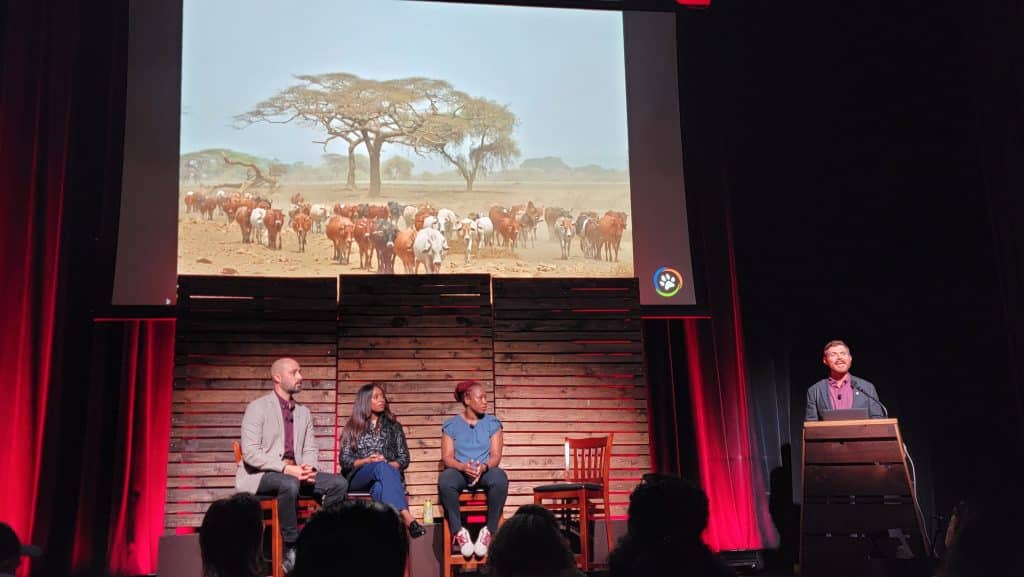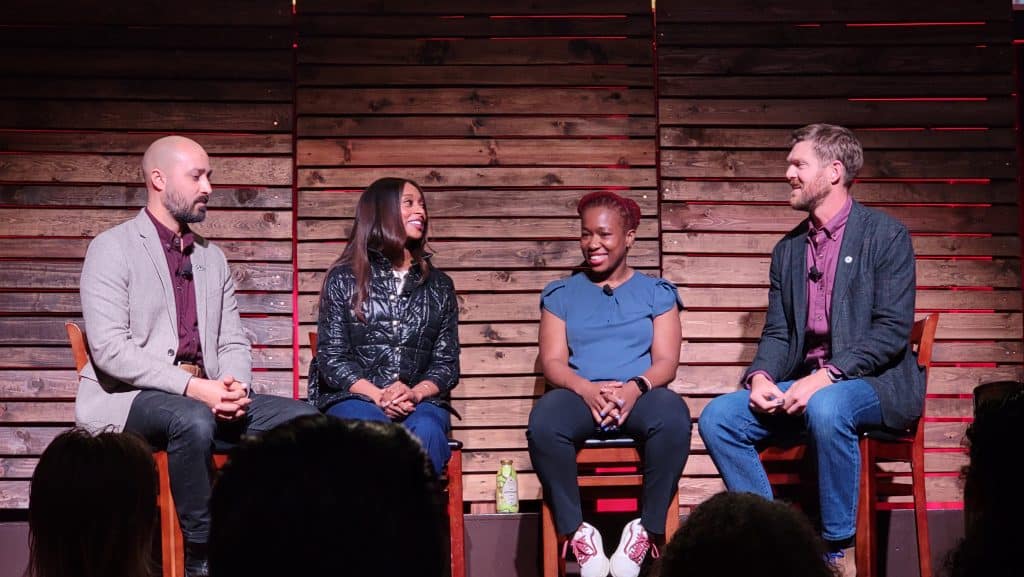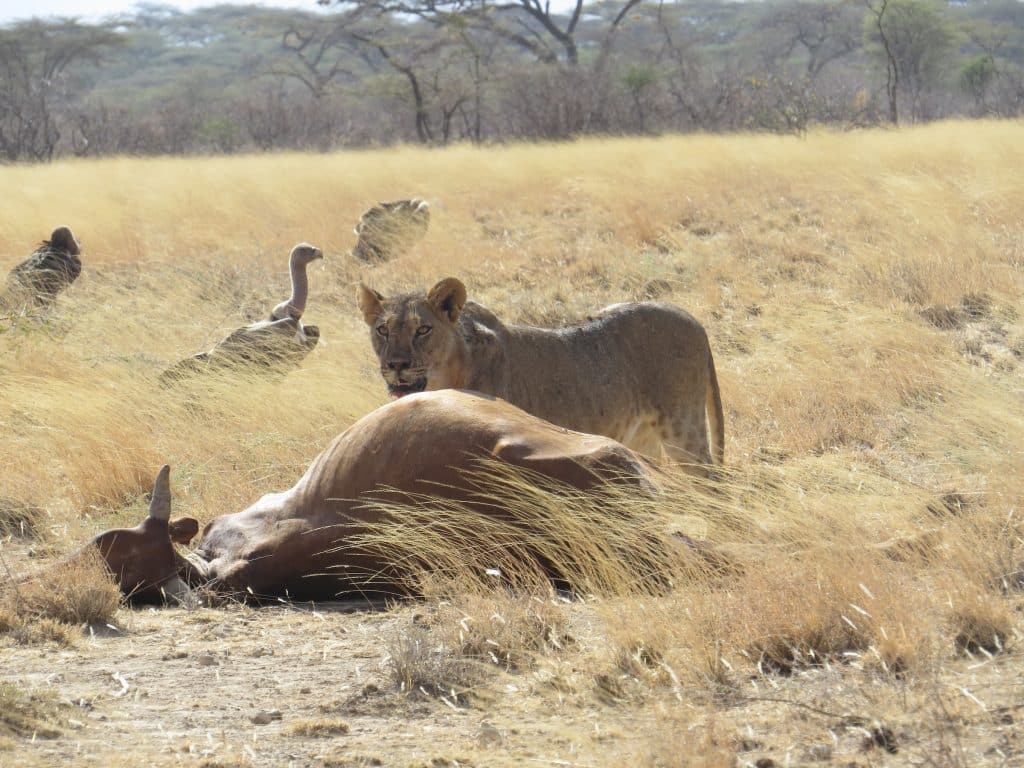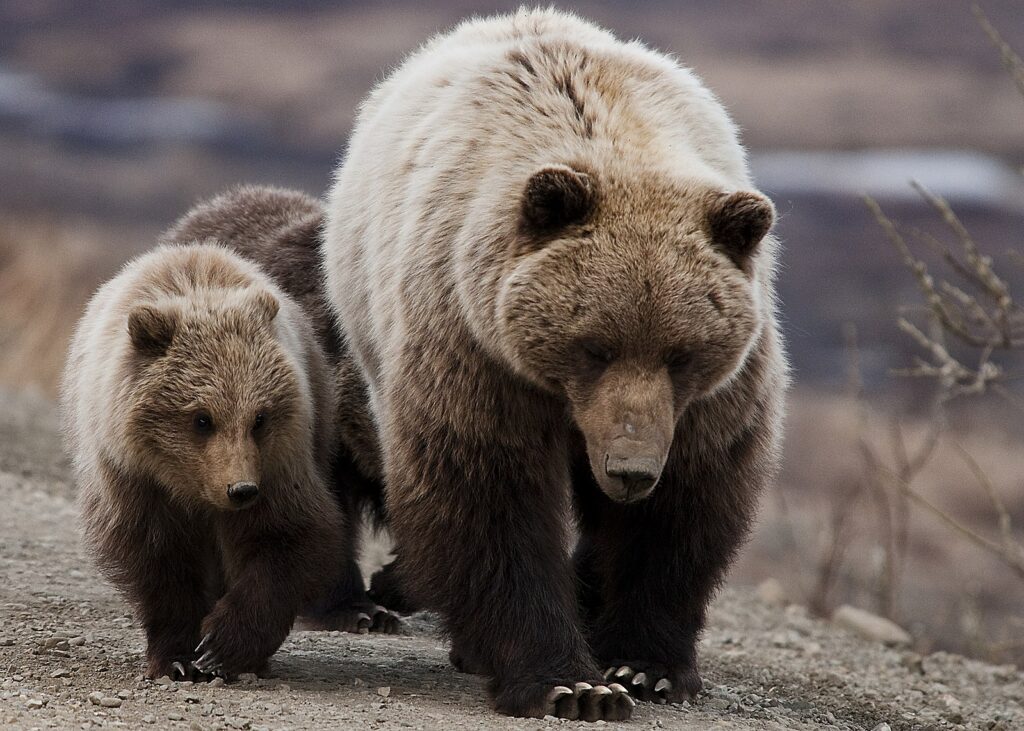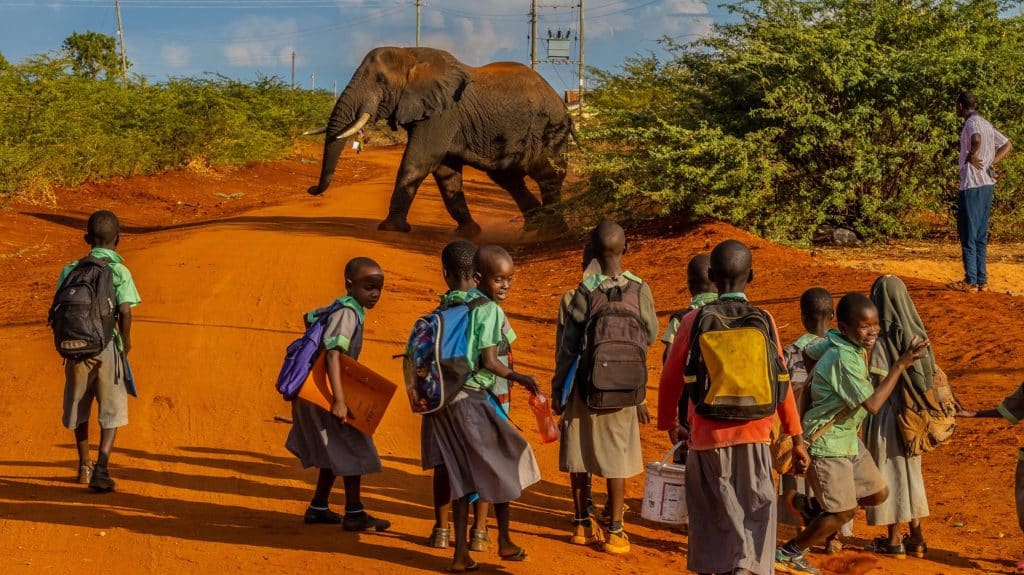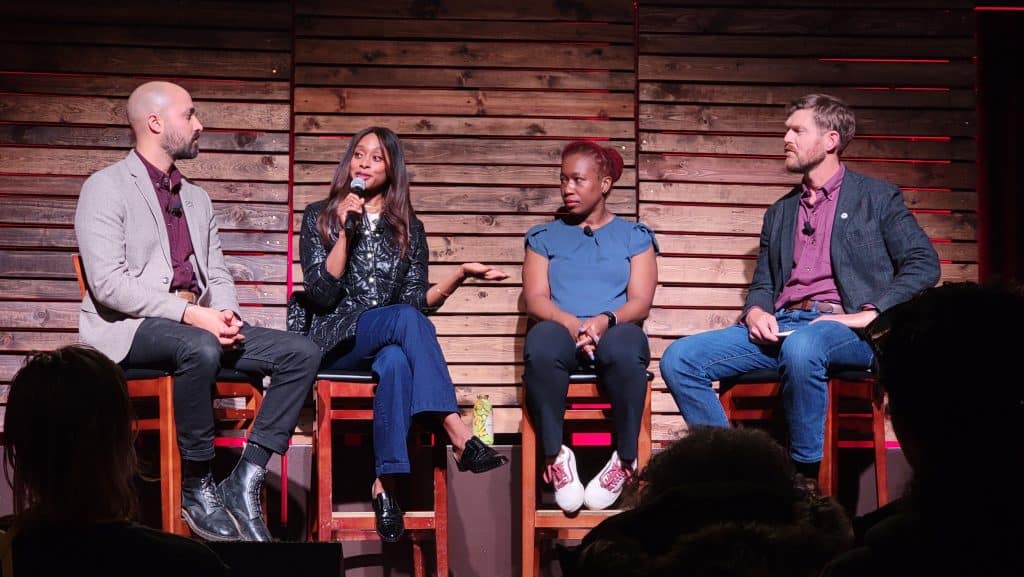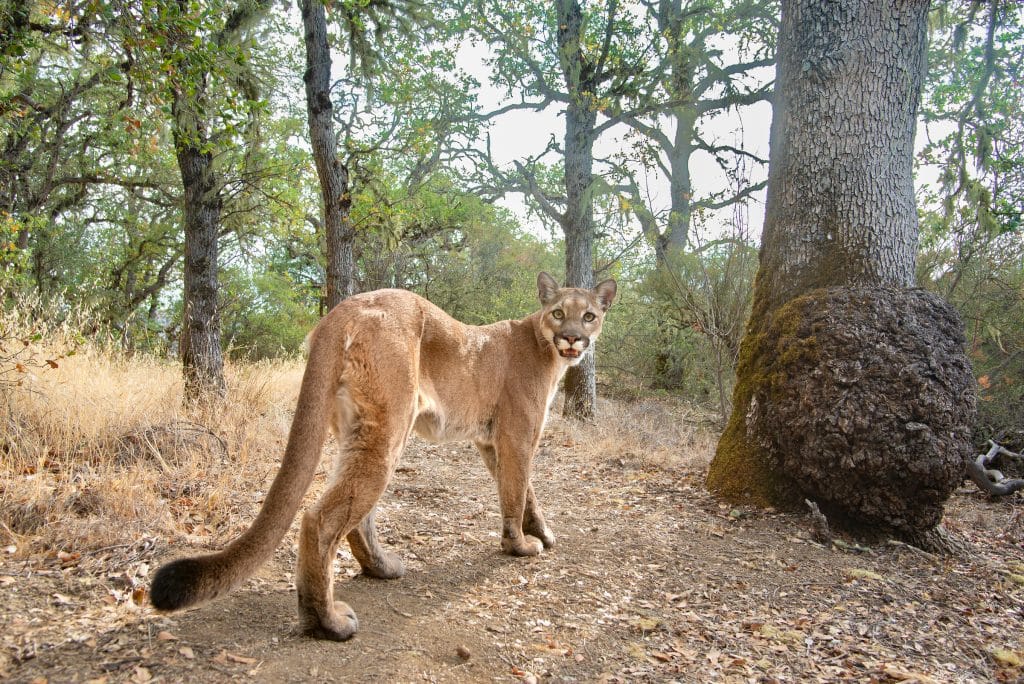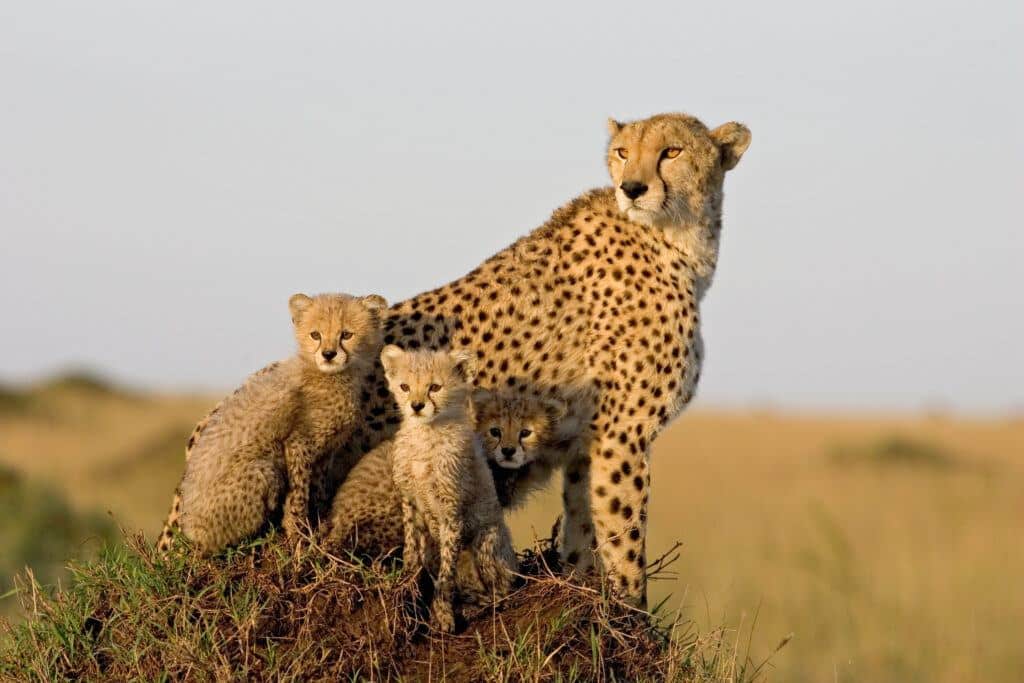Recently, WCN was honored to be invited to speak at Bioneers, an annual conference designed to highlight breakthrough solutions to restoring people, nature, and our planet. For over 30 years, Bioneers has brought together some of the most innovative and inspiring minds to share thought-provoking insights about ways we can collectively act to improve the health and balance of our communities and our world. WCN was thrilled to share unique examples from within our Network of ways that people and wildlife can coexist.
Our presentation, “Coexistence with Wild Animals: New Frontiers in Wildlife Conservation,” was led by Paul Thomson, WCN’s Senior Director of Conservation Programs. He was joined by Dr. Zoe Nhleko and Neal Sharma, WCN’s Senior Program Manager and Senior Manager of the California Wildlife Program, respectively, as well as Dr. Rae Wynn-Grant, a wildlife ecologist and conservation biologist who studies how human activity influences carnivore behavior. These four conservation experts focused on the importance of protecting wild animals and keeping them in mind as humanity continues to expand into more landscapes.
From the plains of Kenya, where lions may prey upon livestock, or the mountain trails of California, where pumas may cross paths with hikers, conflict between people and wildlife can occur anywhere. WCN is dedicated to helping prevent human-wildlife conflict so that wildlife and people can coexist and thrive—as Neal pointed out during our presentation, “Coexistence is so intertwined with conservation that the two terms are basically synonymous.” But conflict isn’t always about preventing livestock predation, it’s about sustainable development that leaves adequate space for wildlife, as well as helping people understand that it’s their responsibility to be thoughtful and proactive about fostering coexistence.
Carnivores have shared landscapes with people from the start of human history, and in some cases, such as bears in North America, even preceded the arrival of people. Coexistence was necessary from the very beginning, and conservation can benefit greatly from employing techniques and knowledge from Indigenous and local communities, who have lived alongside these animals for generations and are the stewards of wildlife.
Yet modern pressures can even affect traditional practices, and there are times when conservationists must convince some local communities to adapt to preserve the well-being of wildlife. “How do we allow people to do what they need to do for their livelihoods, while also keeping room for wildlife who share the same land?” asked Zoe. The answer is by planning activities with wildlife in mind, and to always involve local people in decision making when it comes to conservation interventions. By giving them a leading role in conservation, it instills a sense of ownership and pride in the task of protecting wildlife.
That said, there is no textbook solution to conflict; coexistence is not a black or white state of reality—it’s about degrees of success. There will be ups and downs, triumphs and setbacks, but a willingness to find coexistence and reduce conflict is key. The right interventions can boost coexistence and recognize that no matter what, wildlife always belongs in our shared landscapes. As Rae put it during the conversation, “Wildlife is doing its very best to coexist with us. Are we doing our best to coexist with them?”
In places like California, this willingness to coexist manifests in sustainable development. Habitat fragmentation is a major threat to wildlife like pumas, so infrastructure policies that factor the needs of wildlife into new building projects are critical to ensuring connectivity is maintained and these species don’t vanish from our landscapes. It even extends to everyday sights, like seeing a dead animal along the side of a busy highway. Roadkill can illicit strong reactions from commuters, as no one is ever pleased to see such unfortunate ends for wildlife. This shows an inherent willingness from people to coexist with wildlife, and can help garner support for safer wildlife crossings and more mindful roadway planning.
At its core, conservation is about empathy. There’s an instinctual appreciation for the beauty of wildlife shared by nearly everyone, and if that passion can just be remembered when conflict arises, people can find paths to peace. Conservationists work tirelessly to cater to the perspectives and needs of as many people around the world as they can, because only by being inclusive when it comes to finding solutions to conflict can people feel heard and involved in the process, and thus more invested in the goal of conservation.
During the discussion, Zoe recalled when she was in second grade and asked her teacher what “extinction” meant. When her teacher told her that extinction was “when there was no more left,” Zoe was determined to ensure that extinction no longer happened when she grew up. A little empathy can lead to a lifetime of positive action, and if we can all empathize more with wildlife that must find ways to exist around us, we can more easily find ways to coexist with them.
We’re grateful to Bioneers to giving us an opportunity to reach new people with this important message of coexisting with wildlife. Stay turned for the video of WCN’s presentation coming out shortly!
Support Wildlife Conservation Network
